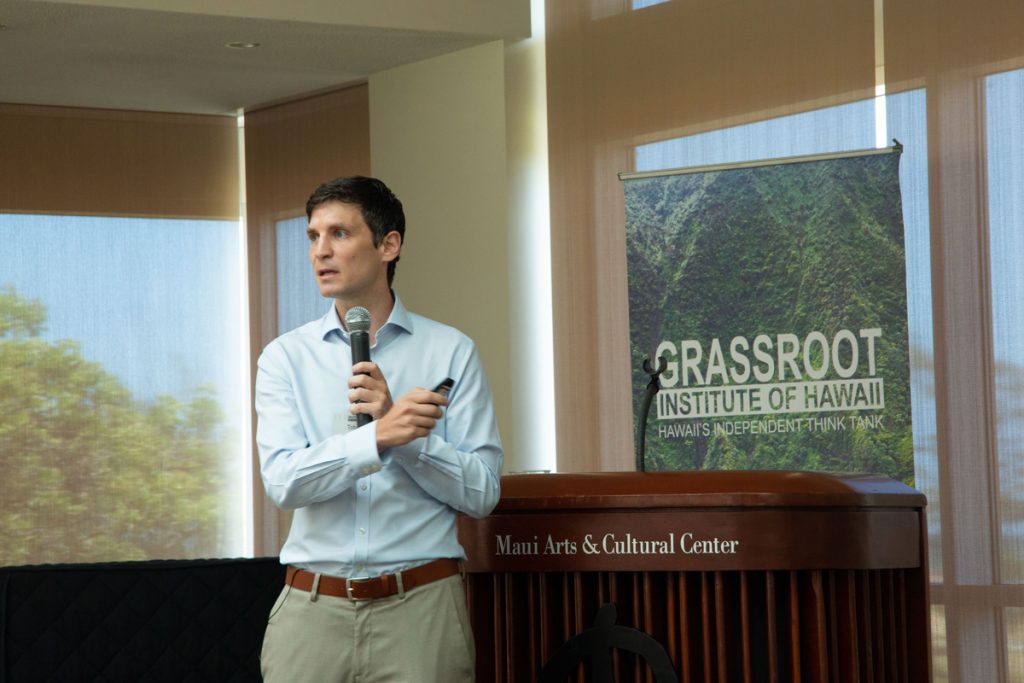AEI Housing Center: “Maui’s sky-high home prices are a self-inflicted wound”

Maui’s record home prices and the impacts that have resulted in displaced residents, are not unique, but there are potential solutions, according to a researcher from a public policy think tank on the mainland.
“Maui’s sky-high home prices and the displacement of the local population that comes with it, are a self-inflicted wound,” said Tobias Peter, director of research at the American Enterprise Institute Housing Center in Washington, DC.
He was a featured speaker at a seminar hosted by the Grassroot Institute of Hawaiʻi at the Maui Arts and Cultural Center on Wednesday, July 13.
During his presentation, Peter proposed looking at Tokyo for possible solutions to easing the housing shortage in Hawaiʻi – adopting or tweaking Tokyo’s housing policies for Hawai’i.
“Examples from Tokyo, but also Palisades Park, NJ, or Seattle, WA show that when zoning laws and building codes are relaxed, it is possible for the private sector to build at the middle of the price range,” said Peter, who has been working on housing research for seven years – and his housing research for Maui and Hawaiʻi for about a year.
According to a 2018 Demographia International Housing Affordability survey, Hawaiʻi has the highest median home price, second highest median rents, second highest rate of homelessness per capita and fourth highest rate of net out-migration in the US.
Peter recommended the “Tokyo Model” because among the world’s largest cities in wealthy nations, Tokyo is one of the most affordable, with residents needing to earn only about five times their median income to afford the median home price. In comparison, Honolulu residents need to earn about 10 times their income to afford the median home price.
Peter’s research shows that the market and property rights based system of Tokyo allows for more natural development with little possibilities for local interference.
“Over a decade, Maui County could easily add about 25,000 new single family housing units by opening up a modest amount of agricultural land for light touch density development or by allowing existing homes to be converted to duplexes,” said Peter.
The key differences between US and Japan housing policy are primarily focused on their differing views on property rights and zoning classifications. Zoning classifications are inclusionary in Japan while it is exclusionary in the US. The inclusionary zoning classifications allow each zone in Japan to have a maximum use category.

Peter identified that Maui County’s existing building code as “very restrictive” with restrictions on lot sizes, building areas, building heights, and setbacks. Conveying that the current building codes on Maui make it near impossible to replicate the Tokyo model that is economically viable and legal.
At the end of Peter’s presentation, some audience members shared their reluctance and skepticism toward the Tokyo model, citing cultural differences and local demands.
Sam King, a candidate for the Office of Hawaiian Affairs, challenged Peter’s recommendation for the Tokyo model by suggesting that issue in Hawaiʻi is not about building houses but migration. “We know how to build houses, we did it in the 70s when we wanted people here, and then we decided we did not want people here,” said King. “Legalize home building and people will come.”










